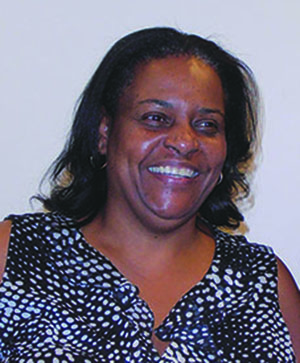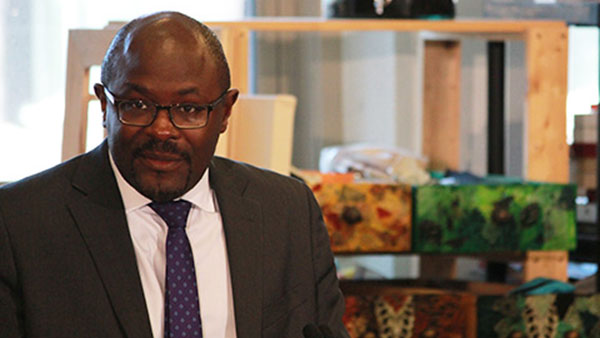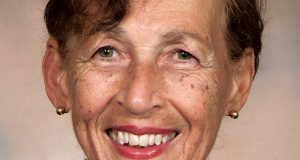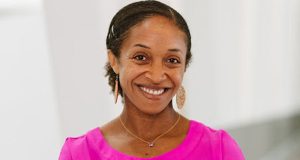By Neil Armstrong
PRIDE Contributing Writer
TORONTO, Ontario July 25, 2016 (PRIDE) — The Substance Abuse Program for African Canadian and Caribbean Youth (SAPACCY) is important to Black youth and the Black community, especially in light of the growing mental health and addiction crisis.
This was the resounding message heard at a community stakeholders meeting, held at Toronto City Hall, on July 20. There will be a follow-up meeting to be held in September.
Organized by the Black Health Alliance (BHA) in partnership with the African Canadian Legal Clinic (ACLC), the Tabono Institute, Zero Gun Violence Movement and individual community partners, it was in response to growing uncertainty within the community, regarding the future of SAPACCY at the Centre for Addiction and Mental Health (CAMH).
“I’ve been involved with SAPACCY for 5 years now. A little history about myself, I was diagnosed with Post-Traumatic Stress Disorder (PTSD) when I was about 15. Unfortunately, my way of coping with it at the time was through violence and substance abuse,” said Jacob Redeem.
He said it wasn’t until he was 23 that he started to get the help he needed, for those eight years that he spent suffering.
Redeem said he was in and out of treatment all over the city and fell deeper and deeper into a hole, believing he would die in it.
“Then finally, after so many years destroying and hurting the people around me, I found myself desperate for one more chance when I came to SAPACCY,” said Redeem, who is biracial – his father is Black and his mother White.
Martha, another client of SAPACCY, said she has been seeing a staff member for over 10 years.
She grew up in foster care, since she was 13 years old, and was always wary about whether she should seek counseling or help.
“I come from a community where you’re not crazy, you’re normal; you don’t have manic depression. What’s that? So, I never really cared, and then when I was about to graduate from foster care, reality hit. I was 21, I’m in depression, I’m suicidal, I’m home alone and I’m about to be a mom. And so I reached out to Donna [Donna Alexander], she was always there, no matter what, and I called her and I said, ‘I can’t do this no more, I need to come in.’ And I went in and I’ve been there for over 8 years.”
Martha said she had an addiction problem and wanted to be committed into rehab but, because the process was lengthy, she was at the brink of giving up.
“There were forms to be filled, all kinds of doctors to be checked and I was like, I just want to go into rehab. I’d never admitted to anybody that I had an issue until that day, and it took a lot from me to actually be honest and speak the truth,” she said.
“Now I’m ready to give up and I can’t. I have an 8-year-old that needs me so I need to take care of me first. Now that I’m reaching out for help it’s not there and that’s not fair,” she added.
Dalon Taylor, President of Black Health Alliance, said a discussion of this kind was well overdue and that SAPACCY plays a big role in the lives of youth, mostly young Black men.
“We also need to have programs like SAPACCY to help them to regain their footing. We need supports that can meet them where they are. We need more culturally specific programs that are designed and delivered from an Afrocentric lens to help them to adjust to the social suicide that they’re currently a part of.”
Presenting a historical background of SAPACCY, Margaret Parsons, Executive Director of the ACLC, said in the mid-90s someone she didn’t know — John Hopkins — approached her. She said he is the founder and the visionary of SAPACCY.
“He realized that Canada was decades behind the US in acknowledging and addressing the concerns related to substance use and abuse among African Canadian youth. He approached the Ministry of Health and they also acknowledged there was a need for a drug prevention program for African Canadian youth,” she said.
Parsons said starting about the mid-1990s, the Ministry of Health funded a stand-alone community-based program that was located on Marlee Avenue, which had about 6 to 8 staff members.
The focus was culturally appropriate and culturally relevant programming for African Canadians. It provided a range of services from clinical programming, counseling, outreach, public education, referral services to treatment and other clinical programs, Parsons added.
She said it was very community-based, very grassroots, and it had a community board of directors.
“SAPACCY had recognition and it really had a cachet in the African Canadian community.”
In about the late 1990s, after a few years, a review was conducted by the Ministry of Health that was led by Dionne Falconer, a member of the African Canadian community with very strong community involvement.
Parsons said there was a name change and it was decided that SAPACCY would be anchored at CAMH.
She said anchoring SAPACCY at CAMH was meant to strengthen the program, not to dismantle or weaken it.
Parsons said in 2003 the Community Advisory Committee was dismantled by the new manager and funding, that was granted for another staff position, was called back because the manager failed to fill it.
She also said SAPACCY only exists in name and is no longer a stand-alone program, such as the program for the LGBT community or the Indigenous community, and there is no dedicated manager for SAPACCY.

Margaret Parsons is a lawyer and the Executive Director of the African Canadian Legal Clinic (ACLC).
Parsons said there isn’t a dedicated budget and, a staff of one, does not make for an effective program.
“You’ll hear from CAMH that more African Canadians are being served. We want quality not quantity. They’re not being served by a dedicated complement of staff. Quality service is one that is culturally appropriate and delivered by dedicated African Canadian staff members within a SAPACCY program, not by individuals who don’t have a vested interest in a successful outcome and services for Black youth,” she suggested.
Parsons said there is a growing, and looming crisis, in the area of mental health and addiction supports for the African Canadian community.
“CAMH should be looking to expand SAPACCY, not destroy it,” she said, alluding to managers who “idly sat by and allowed SAPACCY to be destroyed by CAMH.”
“What we’re witnessing with SAPACCY, at the hands of CAMH, is classic institutional anti-Black racism, under the guise of health equity. This is nothing short of a health travesty,” she pointed out.
Nicole Waldron, a concerned Toronto resident, told Pride News Magazine: “We can’t afford to be amalgamated. We need our programs escalated, we need our programs increased, not deescalated. Mental health (illnesses) in our Black youth is so on the rise.”
Louis March, founder of the Zero Gun Violence Movement, an education and awareness initiative and advocacy group, said when they started, it was about going into classrooms and into communities and the streets to try to bring a different perspective about gun violence.
“Over the last year, two years, we’ve had the unfortunate opportunity to work with some of the people that have been involved in gun violence – people that pulled the trigger, mothers who have lost their siblings to gun violence, people who are planning to pull the trigger, and it’s taken us on a different trajectory, in terms of what we do with Zero Gun Violence Movement,” March said.
March said the young men that are involved have told him about the everyday burden of survival, of dealing with rejection, exclusion, stigmas and being judged, and stereotypes.
“They speak about the lack of access points for help, they speak about bureaucracy, they speak about doors being closed, people not understanding,” he added.
He said these youth are tired of their lifestyle but they do not know where to go.
He said from a culturally sensitive point of view, a lot of them think they are invincible, and that they can overcome it, but they have internalized the day-to-day burden that they live and they do not know how to cope.
“SAPACCY is the place. We speak about mental health; we speak about drug addiction. Most of these kids, for breakfast it’s going to be a smoke and a joint. For lunch, it’s going to be smoking again, and for dinner, it’s going to be smoking. It’s an addiction. When they get into the heavier drugs, it even gets worse. The status quo is unacceptable, young people need help. It’s a slow suicide,” he cautioned.
Dr. Chris Morgan, founder of the Black Health Alliance, said Jacob’s and Martha’s stories show “the crisis at hand, the real time lived experiences, the challenges that they were facing, the many different places that they tried to go to, and where they were not getting help, and the one place that they got help.”
He said this is the reason the SAPACCY program has been so cherished in the community, for such a long time, and why there needs to be more of such programs, rather than any weakening of the program.
Some of the community stakeholders met prior to last Wednesday’s meeting and came up with four recommendations, which Dr. Morgan articulated.
“The desired outcome is to ensure continued effective program impact including, strong clinical and prevention outcomes while maintaining the integrity of SAPACCY. That is to provide a comprehensive model of health service provision, which prioritizes an Africentric orientation and is, anti-oppressive, anti-racist, and culturally appropriate for the African Canadian community. Historically, these have been core priorities of SAPACCY,” notes the preamble.
The first recommendation calls on CAMH to restore the full funding complement of African Canadian clinical therapists and community workers, who are experienced and effective in providing mental health and addiction services within the aforementioned framework, and to include diversity within these positions to reflect diversity in the population served (male, female, etc.)
The second wants the addiction and mental health institution to “restore the Community Advisory Committee to function as a collaborative support group of community experts and allies to provide guidance, expertise, community feedback, critical links and networks and mutual accountability to the African Canadian community.”
The third says: “Due to its unique, culturally specific focus, SAPACCY should exist as a “stand alone” program and all options should be explored to ensure that SAPACCY funding is protected and expanded, including the possibility of integrating SAPACCY funding as part of CAMH’s core funding.”
The fourth requires CAMH to perform regular program evaluations and reports that ensure transparency in program operation.
Dr. Kwame McKenzie, Medical Director of Underserved Populations at CAMH, presented CAMH’s vision for SAPACCY.
Previously, he was the medical director of Child Youth and Family services, which includes SAPACCY.
Dr. McKenzie said he appreciated hearing the lived experiences of Jacob and Martha and what March shared about the experiences of young men his organization encounter.
He welcomed the comments of Dr. Morgan, noting that the suggestions that were put forward are good when starting to think about how to move forward.
“My view is that we actually want the same thing. We want to have services, enough services to meet what is an urgent need, and was an urgent need when this was set up, and is more of an urgent need now, when we see what’s happening in our communities,” he said, referencing the passionate comments of Parsons.
“I think everybody agrees with what we want to get done, but I don’t think we all agree exactly on how it should be done. And, I think it’s quite golden that we remember that — that we all agree on what the issues are and what needs to be done. The question is whether we all agree on how it should be done,” he added.
McKenzie, who is from the UK, said he started his journey on specifically-Black services twenty years ago and, at that time, took a year out of his work and went to the US to look at services for African Americans, to see what the UK could learn.
He spent a year going to services all over America to try and see what worked and what did not work and to try and learn lessons.
When he got back to the UK, he was one of the people who set up the service called “Antennae” in Tottenham, North London, which was just for people of African and Caribbean origin.
“It was paid for by the National Health Service and it used a community model. It was for us by us and it, it had a community advisory which was of youth, and it was for the 16 to 25 year-old Black youth, who didn’t like traditional mental health services,” he said.
CAMH is the largest academic health sciences centre hospital in Canada. It has 475 doctors, 525 beds and 31,000 clients served annually. It does clinical work, teaching and research.
“It is trying to see more people. That’s what it wants to do and so it produced a new way into CAMH called Access CAMH, which makes it easy for people to get in. And it’s got all of these clinical programs and it’s been restructuring them. It wants every person in CAMH to get access to all the other services because we were siloed. It wants to develop pathways that are clear to how people get on, so people know from the time they come in to CAMH what services they can get. It’s trying to make sure it’s got the right people in the right jobs, because sometimes we have the wrong skill mix,” Mckenzie informed the audience.
But several people at the meeting at city hall spoke of the difficulties they experienced using Access CAMH.
McKenzie said CAMH is an academic health sciences trying to make sure that things it does actually work.
He said the institution has been successful in seeing more people — 40% more people are coming in through the emergency department, a 15% increase — and trying to see more people and trying to improve quality and, specifically in this area of youth concurrence, to the youth with mental health and substance misuse problems.
He said, just over the last two years, there has been an increase in this area – 12 in-patient beds at the day hospital and there is an urgent care where youth can get treatment within 24 hours, and expanded out-patient.
“Just recently, over the last couple of months, everybody has been talking about the fact that services, specifically for people between child services and adult services, aren’t working and so they’re trying to pull it together as emerging adult services,” he said.
He added, all of these changes are trying to improve quality and improve access to services.
Dr. McKenzie showed a slide of the emerging adult services program which includes treatment programs, in-patient, out-patient, lots of different things, and research on top of it.
“SAPACCY is written into it but the important thing about it is SAPACCY is a small part of the emerging adult program. The emerging adult program is only a part of CAMH. The reason I say this is, is because if we only give our people access to SAPACCY, we’re missing out on the riches that are everywhere else, even in the emerging adult programs. And, partly because this is an urgent and significant crisis and I do not believe that one small service is going to make the difference we need. We need the bigger service, a much bigger service and not just at CAMH. We need to think bigger than SAPACCY if we’re going to do the right thing,” McKenzie said.
He said SAPACCY came into CAMH in 1999 and came into youth services in 2002, and that he would have to respectfully disagree with some of the history he heard, because it is not the history that he recognized.
“On the books, CAMH has been subsidizing SAPACCY since it came in, so CAMH money goes into SAPACCY. CAMH does not take SAPACCY money so the money stays in SAPACCY, focus on African Caribbean youth served by African Canadian staff, outreach to shelters, detention centres, clinic-based appointments and an approach that recognizes the lived experience of racialized youth,” he noted.
The protected vote funding from the government for SAPACCY is less than $300,000.
Dr. McKenzie said one of the things that has happened, is CAMH has been tracking the number of registered clients seen at SAPACCY.
This does not include the clients that are not seen in CAMH, meaning where SAPACCY does outreach, and those numbers have stayed the same over the period of time.
“But up until the time when CAMH changed the way in, they were seeing about 60 registered clients. Then it went up towards 80 and, since SAPACCY has linked with youth and addictions and current disorder services, which has happened recently, it’s almost doubled. Those are the figures we’ve got on the number of people who’ve been seen through SAPACCY at CAMH, doubled over a two-year period and that was the aim of changing the service model.
“The aim is not to decrease the number of people seen, it is to increase the number of people seen, it’s to increase choice, it’s to increase the opportunities to actually take the services we’re all paying for in our taxes. That’s the end. SAPACCY isn’t being shut down. SAPACCY isn’t going to be shut down. CAMH is going to continue to subsidize SAPACCY and there was a change in staffing but that’s going to be replaced, because where we’re going forward is the future vision, is there will still be African and Caribbean-origin staff. We want to enhance the access for a continuum of services at CAMH, including psychiatry,” he advised.
Dr. McKenzie said the aim is not to shut SAPACCY down, but he could understand with what happened and the way it was communicated, that people might have thought that this was what was going on.
He encouraged everyone “to think about the bigger prize” — that the way services are going to be commissioned and are going to be run in Ontario and in Toronto are changing.
There is a document called “Patients First” which talks about local commissioning with sub-links, five different areas of commissioning. Each sub-link is supposed to develop a mental health plan.
“I’m interested in speaking to the sub-links to say we need to do more for diverse populations. We need to do more for African Canadian populations and to try and get it on their mandate, ’cause at the moment, I can tell you they’re not thinking about it.”
He said Health Quality Ontario agreed, just this year, to write their first health equity strategy for Ontario.
“Health Quality Ontario are the people who analyze how well services are being delivered in Ontario. They advise the government, they’re the watchdog but they’ve never done health equity.
Camille Orridge, who was the head of Toronto Central Link, is moving to the board of Health Quality Ontario and will be one of the people who is trying to push forward the health equity strategy of Health Quality Ontario.
“And I think we should be on the agenda,” McKenzie said, noting that there is also something called the Mental Health and Addictions Leadership Advisory Council to the Minister of Health on which he and another African Canadian sit.
They have been trying to put forward the idea of equity, diversity of services and culturally appropriate services to that council.
“There needs to be a stronger voice, because that is the group that speaks to the minister and deputy minister. They attend those meetings and there needs to be a stronger voice,” he said.
McKenzie concluded his presentation by saying that, “We just need to get smart about the opportunities that are out there, because we do not have a voice in the places we need to have a voice. And there are much bigger fish to fry, in my mind, around how we set up health services and mental health services for Black people in Toronto and at the moment, we’re not on the agenda in the way we should be.
“And I think it’s important, since we all want the same thing, that we broaden what we’re talking about and what we’re thinking about – not just to be thinking about SAPACCY ’cause I think we’ve all reached agreement on that – but that we take it further and think about how we can work together so that services and mental health services take an anti-racist, anti-oppressive and culturally appropriate lens and move things forward for us.
“The message is, we agree on SAPACCY, then what, what next, because SAPACCY will not be big enough to deal with the problems we have to deal with. We pay our taxes and should be trying to get bigger and better services for our population that meet our needs, we need to have a voice.”
Also in attendance was Christina Bartha, executive director of CAMH’s Child Youth and Emerging Adult Program, who also responded to queries from the community stakeholders.
The Centre for Addiction and Mental Health is Canada’s largest mental health and addiction teaching hospital, as well as one of the world’s leading research centres in the area of addiction and mental health.
 Pride News Canada's Leader In African Canadian & Caribbean News, Views & Lifestyle
Pride News Canada's Leader In African Canadian & Caribbean News, Views & Lifestyle





